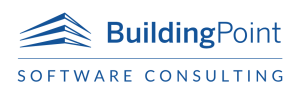Not too long ago, I got to work late and found ten voicemails, 25 emails, a pile of mail to sort through and many text messages. It was only mid-morning and already my desk was full of data and information that I needed to wade through. I’m definitely an organized person, but even I can feel overwhelmed with so much correspondence coming in and not knowing where to start or how to prioritize.
My dilemma got me to thinking about the project managers in our company. They have to juggle and manage scheduling and sub-contractors, forms and job costs every day. This can’t be easy, considering projects have more moving pieces to them as they get larger and more intricate.
Handling more data and correspondence doesn’t mean you have to work “harder.” It simply means you have to work “smarter.” In the past, that would mean prioritizing tasks, however things change faster now and you could spend all your time trying to figure out what needs to be done first. This is where technology can save the day.
With the right software, you can now prioritize with “exception.” If you are not familiar with the term in this context, it means ear-marking those things that are “exceptional” or “exceptionally important or “exceptionally time sensitive.” Having this information, you are able to work smarter by making informed decisions regarding your time, effort and resource use.
Using two categories, push and pull, you can manage the flow of information and helps point out the “exceptions” in you work.
Push uses rules that you set yourself. These rules sort through the massive amount of information and then pushes out alerts to you, or other members of your team. The alerts help save time and duplication because it places every member of your team on the same page, and therefore streamlines the actions that need to be performed.
Pull gives you an updated view of project data and performance. This can be tailored to any specific job. A project manager needs to keep a keen eye on change requests and work in progress costs. A construction accountant needs to monitor invoicing and over/under billing as it changes. Having the summary information pulled out for you saves valuable time.
Choosing the appropriate software is a daunting task. Looking at the features and how the software works is an important component, however the most overlooked factor is how the software will “behave.” Does it give you the push and pull options to view pertinent information? Purchasing new software is a large investment for your company, you need to make sure it will grow with you. When looking at construction project management software, plan ahead for the many changes a growing company will endure.

